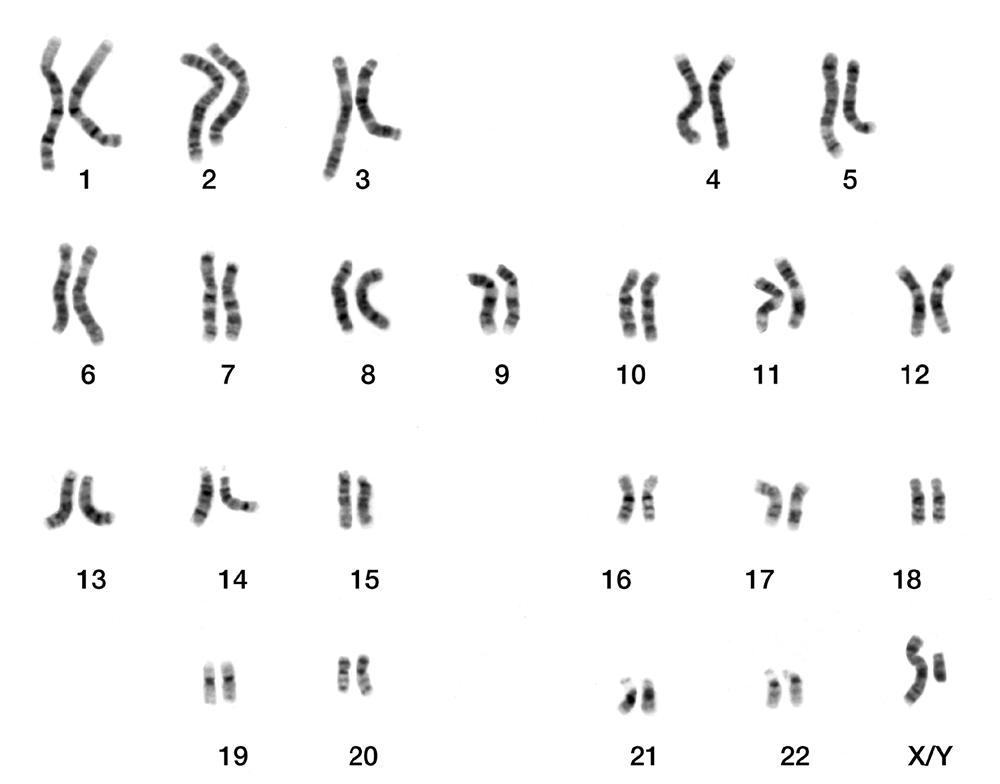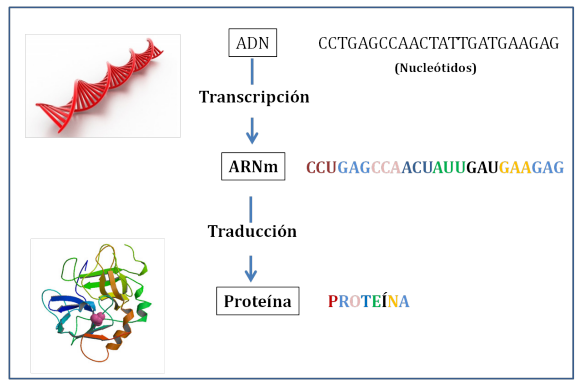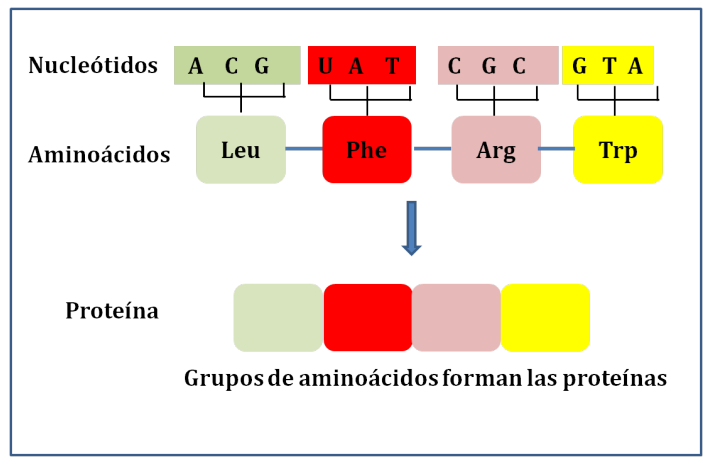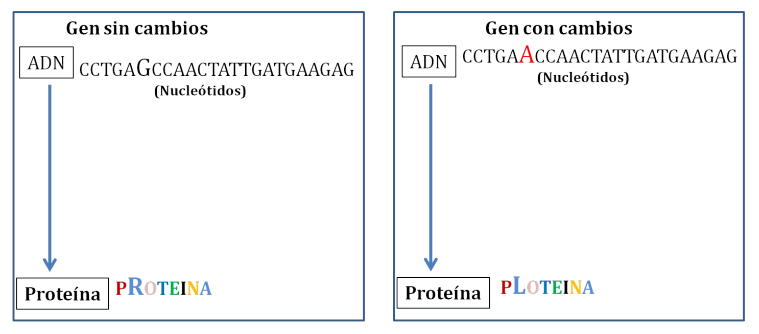Kabuki syndrome
2. Genes and chromosomes
Human cells contain DNA information in 23 pairs of chromosomes, half of which come from the mother's egg and the other half from the father's sperm. Chromosomes vary in size and shape, but they are all made of DNA, packaged with histones and nonhistone proteins (biological "glue") in a certain way in each of the 46 chromosomes that make up the 23 pairs, like an ordering tool in a shop full of machines, each in a specific place to be used at the right time.

Each nucleated cell in the body contains 46 chromosomes, forming 23 pairs, with the exception of the sex cells, the egg and sperm, which are special. They have followed a special type of cell division that leaves them with only one copy of each chromosome in each cell (23 chromosomes), as opposed to the two pairs of each chromosome that the rest of the cells have (46 chromosomes). That is, so that when the egg and sperm unite, they form a living being with two copies of each chromosome (23+23=46 chromosomes). In this way, each baby inherits one copy of a chromosome from each parent, as well as one copy of each gene from each parent.
The reason why children look like you but are not you, or siblings are not identical to each other is due to the way the 23 pairs of chromosomes have been “handled” at the time of becoming living beings. Each one has its own “load” of 46 chromosomes. The 46 chromosomes can be divided into autosomes (non-sex chromosomes, 1 to 22) and sex chromosomes (X and Y). Women have two X chromosomes and men have one X and one Y chromosome.

The sequence of nucleotides determines the genetic code, that is, the instructions for producing proteins (Metabolic Guide).
Each piece of DNA that codes for a different protein or trait is called a gene. On each chromosome there are hundreds of genes. But all the genes in the DNA are not “active” at the same time.

The sequence of bases (nucleotides) in the gene is what determines, through the genetic code, the instructions for synthesizing (forming) proteins.There is a process of reading that DNA, from which an intermediate molecule, RNA (ribonucleic acid), is formed. This RNA is capable of exiting the nucleus to form a protein. Proteins are chains of amino acids. Each amino acid is determined by 3 bases of the DNA.
Sometimes a person's genes may be altered. These alterations can occur spontaneously (often during embryo formation) or be inherited from the parents. One of the most common forms of genetic alteration is mutations. A mutation is a stable change in a gene (capable of being inherited), which will cause an alteration in the synthesis of the protein it encodes and will therefore modify the function that this protein performs. There is a process of reading this DNA from which an intermediate molecule, RNA (ribonucleic acid), is formed. This RNA is capable of leaving the nucleus to form a protein. Proteins are chains of amino acids. Each amino acid is determined by 3 bases of DNA.

It can also happen that genes undergo deletions. These are losses of DNA fragments that can affect 1 gene or group of genes and are of different sizes. Like mutations, they alter the function of proteins and can produce different genetic syndromes.